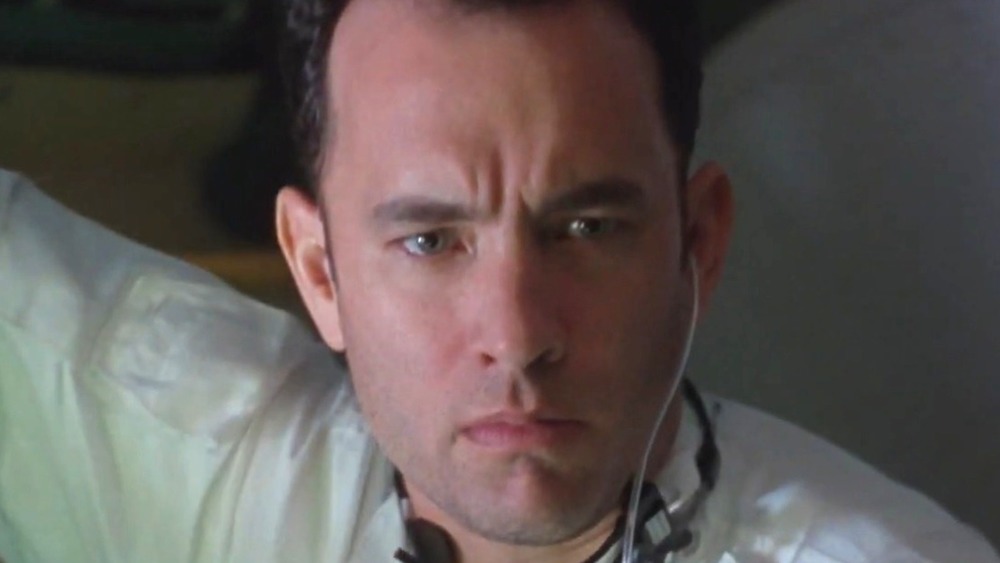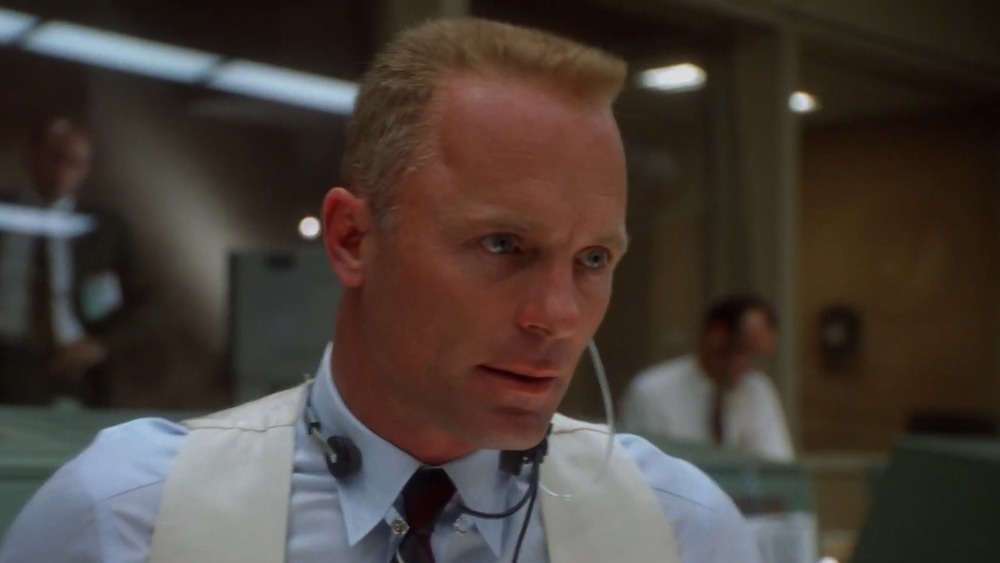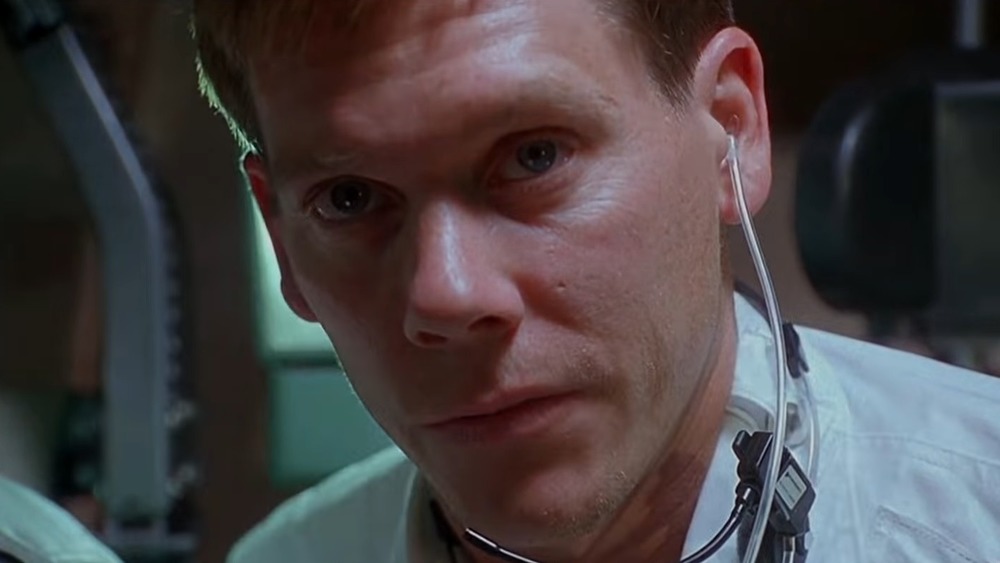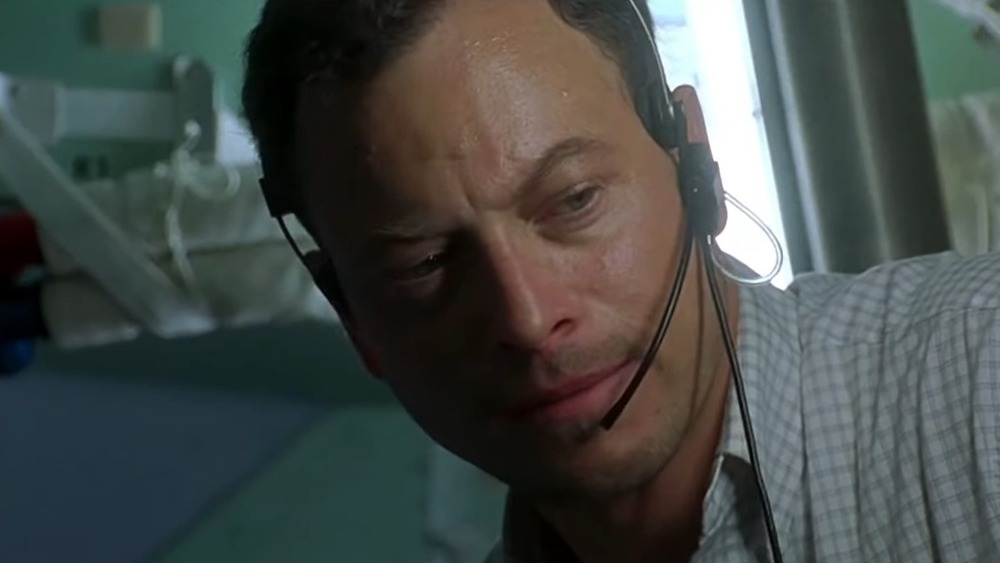Is The Apollo 13 Movie Accurate To The True Story?
Ron Howard's space disaster movie Apollo 13 earned a lot of attention when released in 1995. The docudrama, which featured massive stars like Tom Hanks, Bill Paxton, and Kevin Bacon, depicted one of the most famous failed space missions and was nominated for nine Academy Awards, including Best Picture.
Apollo 13 didn't just have a great cast behind it. The movie also received extensive support from the crew that flew the actual Apollo 13 mission and resources from NASA to help lend the film an air of authenticity. In fact, director Ron Howard based the movie's events on Apollo 13 Commander Jim Lovell's book Lost Moon: The Perilous Voyage of Apollo 13, a well-received, accurate account of what occurred when the mission fell apart in space.
However, Hollywood is well-known for its predilection to move around essential details in the pursuit of a stronger story, and there are plenty of true story movies that have lied to audiences out there. Let's take a look at Apollo 13 to find out if the movie is accurate to the true story.
Experts agree that Apollo 13 is a largely accurate depiction of the true story
While it may be easy for filmmakers to play with facts, Ron Howard committed to portraying events in Apollo 13 as true to life as he could, which many experts agree that he did. NASA planetary scientist Rick Elphic "posits that Apollo 13 might be one of the most accurate, especially when it came to the science of space travel" (via Time).
Not only did Apollo 13 get the science right, but the film accurately portrayed the events of the real space disaster by adhering to the timeline as recorded in Jim Lovell's book. Beyond that, the filmmakers and set designers went to great effort to recreate the space capsule and command center's actual environment. Lovell told The New York Times, "It's really amazing. Everything. The instrument panels, the console switches. That's exactly what it looks like inside."
Howard didn't stop at recreating the tools that the astronauts used in space. Zero-G scenes were filmed by sending Tom Hanks, Kevin Bacon, and Bill Paxton up in the same type of aircraft that reproduces reduced gravity for astronauts to train for space flights in. Short of filming Apollo 13 in space, the film is about an accurate representation of the true story as viewers can hope to see.
Artistic license moves the dial on some of Apollo 13's details
Apollo 13 may do an excellent job portraying the real events, settings, and situations that the actual astronauts found themselves in, but there are a couple of details that the film moves around.
For instance, the astronaut who gets bumped from the mission last minute, Ken Mattingly, played by Gary Sinise in the film, notes some exaggerations during the problem-solving scenes at mission control. While the mission control did simulate the solutions they sent to the Apollo 13 capsule, Mattingly said, "Contrary to the movie and all of those things, we didn't solve any problems in the simulator." NASA devised many of the solutions used ahead of time.
Commander Lovell, whose book the movie was based on, admitted a few changes in the film's version of events as well. The opening scene where Lovell's wife dropped her engagement ring was real, Lovell told the Houston Chronicle (via the South Florida Sun-Sentinel), except that the ring was retrievable. In addition, when asked during a screening whether the crew was able to halt Apollo 13 within a 38-second window, as depicted in the film, Lovell stated that the actual crew only had 14 seconds.
Houston, we have a dialogue problem
While the majority of changes in Apollo 13 are easy to overlook, fans of the film may be disappointed to learn that some of the most famous lines of dialogue are also slightly off. Tom Hanks' famous line from the movie, and perhaps one of the most famous lines of dialogue from the '90s, "Houston, we have a problem," went a bit different in real life.
On the actual Apollo 13 spaceflight, NASA's official records state that after the crew heard a loud bang and alarms go off, Commander Lovell said, "Okay, Houston, we've had a problem here." Mission control asked Lovell to repeat himself, at which point he said the closest version to Apollo 13's famous line, "Ah, Houston, we've had a problem here."
Another famous line from the movie, attributed to Gene Kranz and spoken by actor Ed Harris, ends his famous motivating speech with "Failure is not an option." While Kranz liked the line and even used it as his memoir's title, he never actually spoke those words during the disaster.



